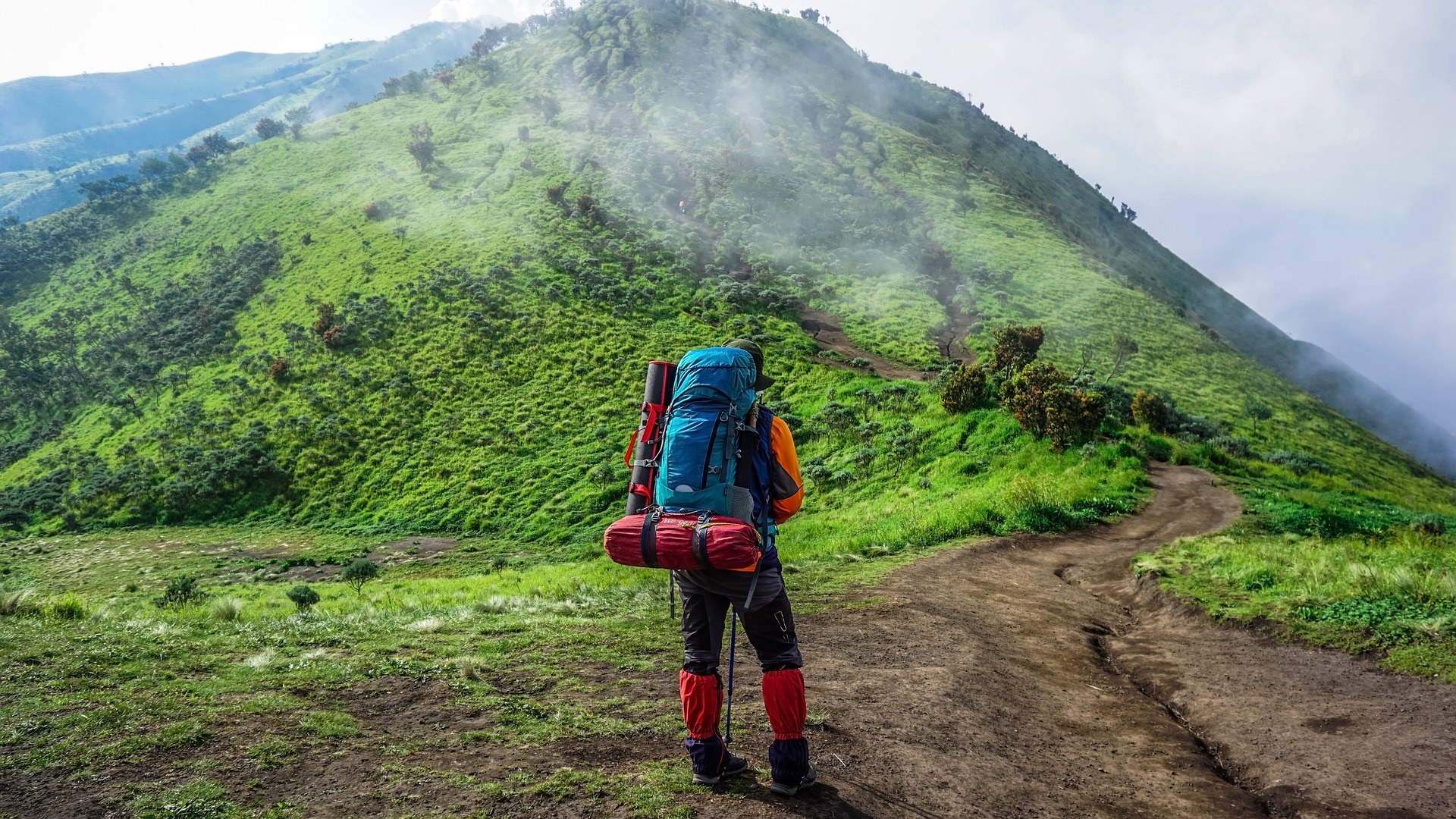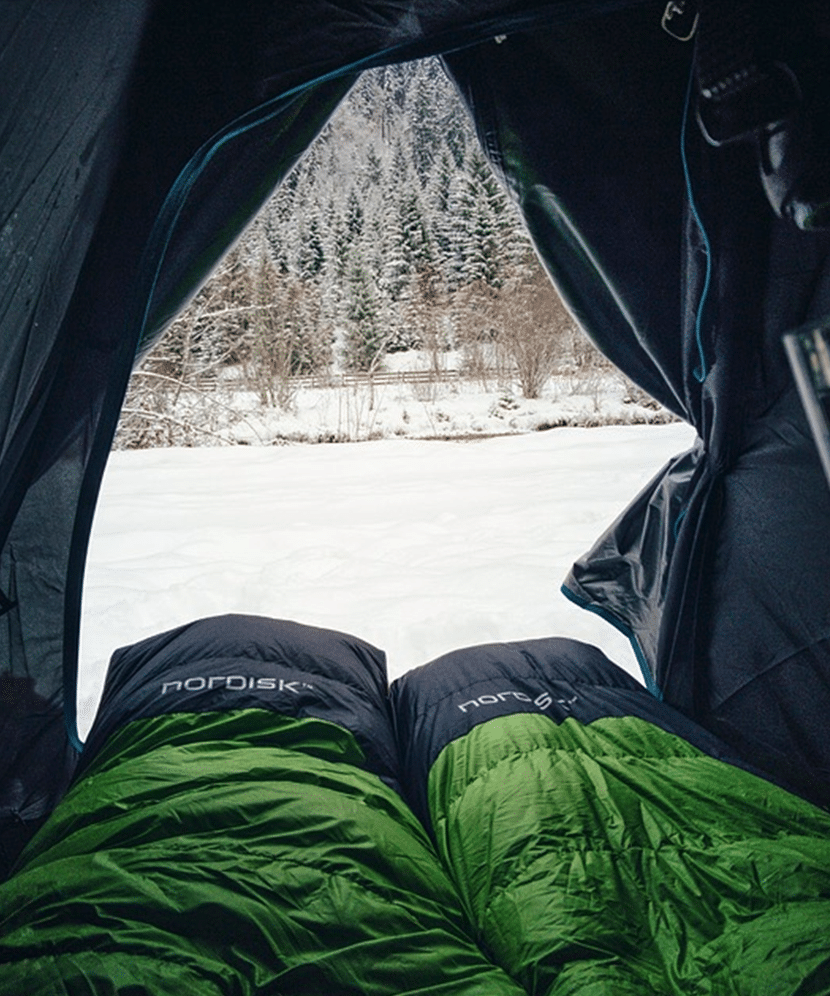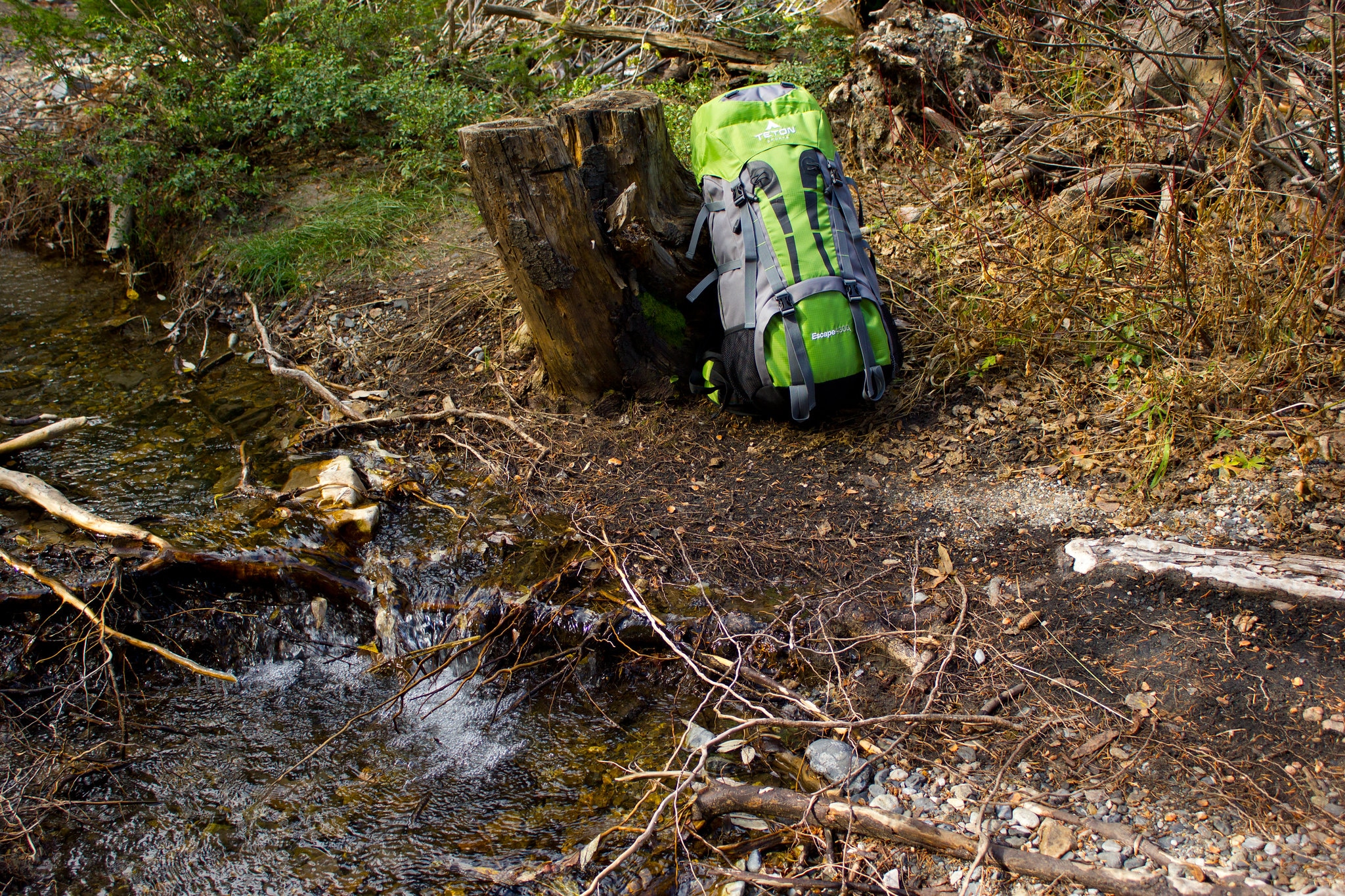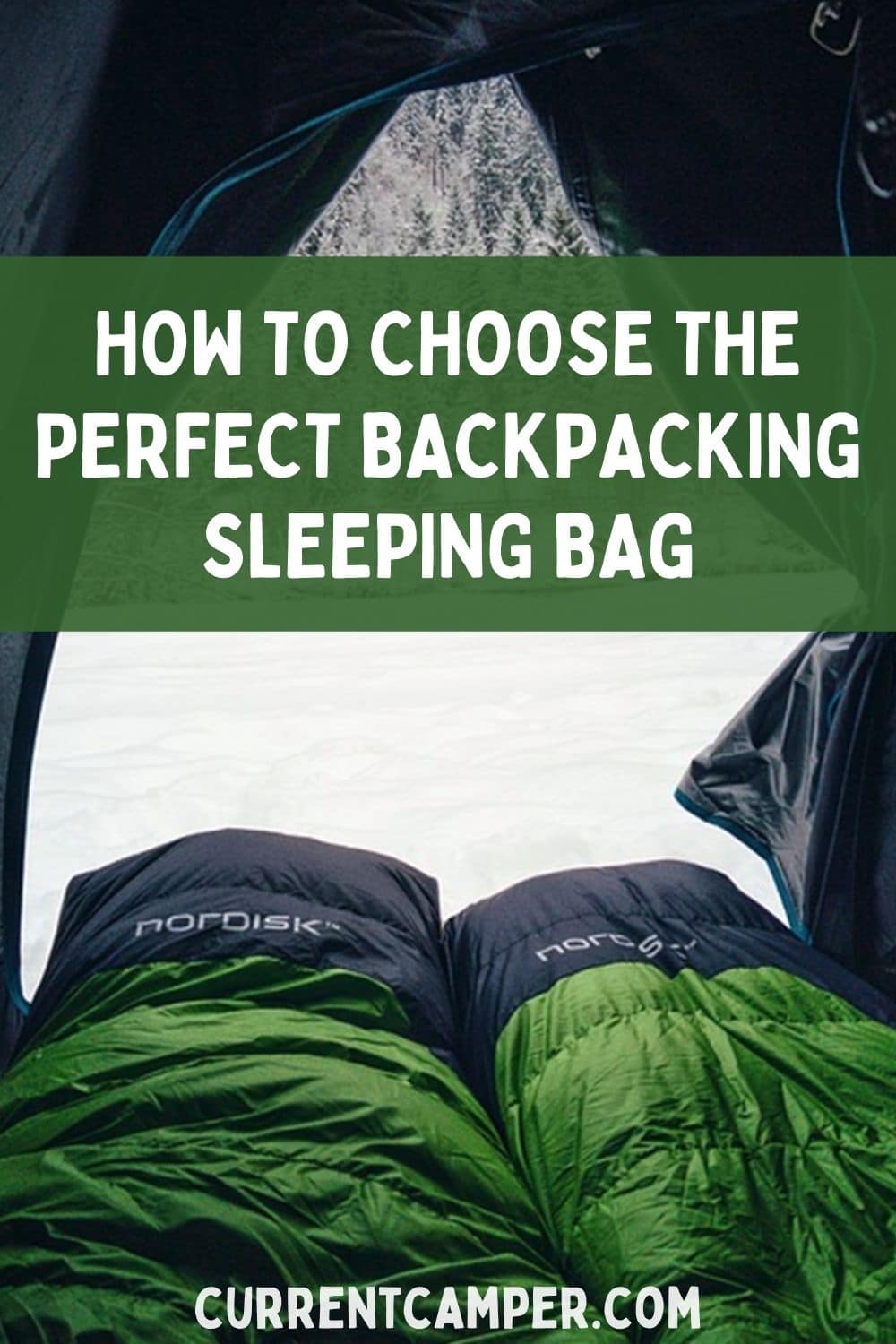
Whether you’re planning your first backpacking trip or it’s time to upgrade your old gear, figuring out which backpacking sleeping bag is best for your pack is an important first step. There’s nothing worse than getting into camp after a long day on the trail and not being able to get a good night’s rest because your sleeping bag isn’t up to the task.
There are some crucial differences between a backpacking sleeping bag and your typical “camping” bag, and if you don’t know what to look out for you may be in for some rough nights in the woods.
We’ve put together the key points that make a sleeping bag fit for backpacking duty to help you decide which of the 100+ models out there is right for you.
Weight
Your backpack, your shelter, and your sleeping system are the “big three” items on your backpacking gear list, and keeping the weight down for all three plays a huge role in the effectiveness of your setup.
Most packs will be limited in the amount of weight they can properly support, so making sure your sleeping bag isn’t taking up more than its fair share is an important first step.
A basic rule of thumb for any backpacking sleeping bag is that it should weigh as close to two pounds as you can get. Any more than that, and you may have to scrap some creature comforts to make up for the extra weight.
The fill material and the shape of your bag will make all the difference here, so keep reading below to find the easiest way to hit your goal weight.
Fill Material In A Backpacking Sleeping Bag

When it comes to sleeping bag insulation, you’ve got two main choices: Natural down, or synthetic fibers.
Natural down, which comes from the insulating base feathers found on birds, will generally come from either ducks (duck-down) or geese (goose-down), and is by far the most popular choice for backpacking sleeping bags.
That’s because down provides an outstanding warmth-to-weight ratio and can be compressed to a fraction of its regular size using a good stuff sack.
Down does have its shortcomings though.
For one, sleeping bags with down fill will almost always be more expensive than a similarly rated synthetic bag. Down bags are an investment, but a worthwhile one to consider if you’ll be spending a lot of time outdoors.
Down fill also doesn’t insulate as well as synthetic fill when it’s wet.
There are different versions of down that are treated to repel water to improve their wet performance, but generally speaking if you’ve got a down sleeping bag, you’ll be doing everything you can to make sure it stays dry out on the trail.
Synthetic fill is typically made from polyester fibers, and is a budget-friendly alternative to down feathers. Synthetics will typically be more bulky and less compressible than their down counterparts, but they will also continue insulating when wet, and have the added bonus of being fully hypoallergenic.
Another factor to keep in mind when considering a bag with synthetic fill is that the fibers will slowly lose their ability to insulate each time the bag is compressed for storage. You can still get three to four years of use out of a synthetic bag before you start to notice a serious drop in comfort, but a good quality down bag can serve you for over a decade with proper care.
It’s also worth noting that finding a synthetic sleeping bag at or below the two pound weight limit recommended above is no easy task. Some will be more compressible than others, but they will all be heavier than down bags of the same warmth rating.
Some hikers may be tempted to buy bags with higher warmth ratings to cut costs and save weight, so let’s talk about the importance of your bag’s warmth rating.
READ MORE: 9 Tips For Camping With Your Dog
Warmth Ratings For Sleeping Bags

Warmth ratings indicate the outside temperatures that a sleeping bag can be used in, and there are two common systems used for determining these temperatures: “ISO” and “EN”.
Choosing a backpacking sleeping bag with one of these two ratings is important. That’s because both ISO and EN temperature ratings are determined by third-party testing rather than the manufacturer themselves, which guarantees the consumer that the bag is as warm as it claims to be regardless of who made it.
Both ratings are reliable indicators of your bag’s performance, but if given the option of the two, just know that ISO ratings are the “new standard” and the testing for this rating is more rigorous and consistent across the board.
Both ISO and EN ratings come with two recommendations for comfortable sleeping temperatures: “Comfort” and “limit.” The “comfort” rating is the higher temperature of the two, and is meant to indicate the lowest temperature your average person will be comfortable inside the sleeping bag using a basic foam sleeping pad and wearing thermal base layers. The “limit” rating is the lowest temperature your average person would be able to safely sleep in without risking hypothermia or other extreme cold-related health concerns.
The most important thing to know about these ratings is that they are presented as temperature “ranges” which means results will vary based on several factors including your body type and the other aspects of your sleep system like your shelter and the thickness of your sleeping pad.
So for the EN-rated bag below, a warm sleeper might be perfectly comfortable at 30 degrees, while a colder sleeper or someone with a slimmer build might be completely miserable, but the health of both sleepers shouldn’t be at risk according to the 35-25 degree rating.
Without an ISO or EN rating, you can’t be confident that a bag will keep you comfortable when temperatures start to drop, which isn’t something you want to discover when you’re already 10 miles into the wilderness.
Which warmth rating you choose will depend on your body type and the temperatures in the area you’ll be hiking, but for general three-season use, a bag with a limit rating between 20 and 30 degrees is the best choice for most backpackers.
Shape And Size Of Backpacking Sleeping Bags

This can come down to personal preference, but depending on your shelter/sleeping pad setup, you may have fewer options than you think.
In terms of shape, you’ve got two main choices for backpacking gear: Mummy bags and barrel bags.
Mummy bags are shaped to conform closely to the shape of a body at rest, so they will be widest at the shoulders and taper down from there into a compact foot box. The slim cut of these bags will help cut down on overall weight and will help the bag insulate your body more efficiently, but it also means the sleeping bag will move with you anytime you reposition during the night.
Barrel bags, or “semi-rectangular” bags, are shaped similarly to mummy bags, but are roomier inside and don’t taper down as much toward the footbox, giving you the ability to move around inside of the sleeping bag rather than having the sleeping bag move with you.
These bags are considered a more comfortable alternative to mummy bags, but will typically mean a trade off for overall weight and packability.
There are other sleeping bag shapes out there of course. Traditional rectangular bags, for instance, are popular for car camping but are typically too bulky and cumbersome for a functional backpacking sleep system.
You could also look into “trail quilts”, which are used in conjunction with sleeping pads as either a sleeping bag alternative, or as an addition to a traditional bag and pad system, but we recommend sticking with the tried-and-true shapes above for your first serious backpacking bag and branching out from there as you figure out what features you prefer.
Shape plays a big part of the overall size of your bag, but another huge difference between a sleeping bag for backpacking and a regular bag is the packed size. The packed size of a sleeping bag is how small a bag will pack down when stuffed into a sack and fully compressed.
This is an important factor to consider when choosing a bag because while you want to keep your pack as light as possible, you also need to make sure you’ve got enough space left over for other big-ticket items.
Again, the packed size of your sleeping bag will largely be determined by the fill type you select, so if your pack is starting to look a little full, down fill will be your best option.
READ MORE: 10 Essentials You Need On Your Backpacking Gear List
Pin it for later!
